the Basics of Bricklaying: Running Bond Method
Have you ever seen a brick wall and wondered how it was constructed?
Why does one brick wall look different than another?
Much of it has to do with how the bricks are laid. Today, we’re exploring a popular bricklaying technique: the Running Bond method.
Whether you’re a DIY enthusiast, newbie in construction, or merely a curious mind, this guide is for you. In the following sections, we’ll unpack what the running bond method is, discuss its key benefits, and explain why and where it’s commonly used.
Ready to go brick by brick into the running bond method?
Let’s get started!
Table of Contents
Understanding the Running Bond Method in Construction
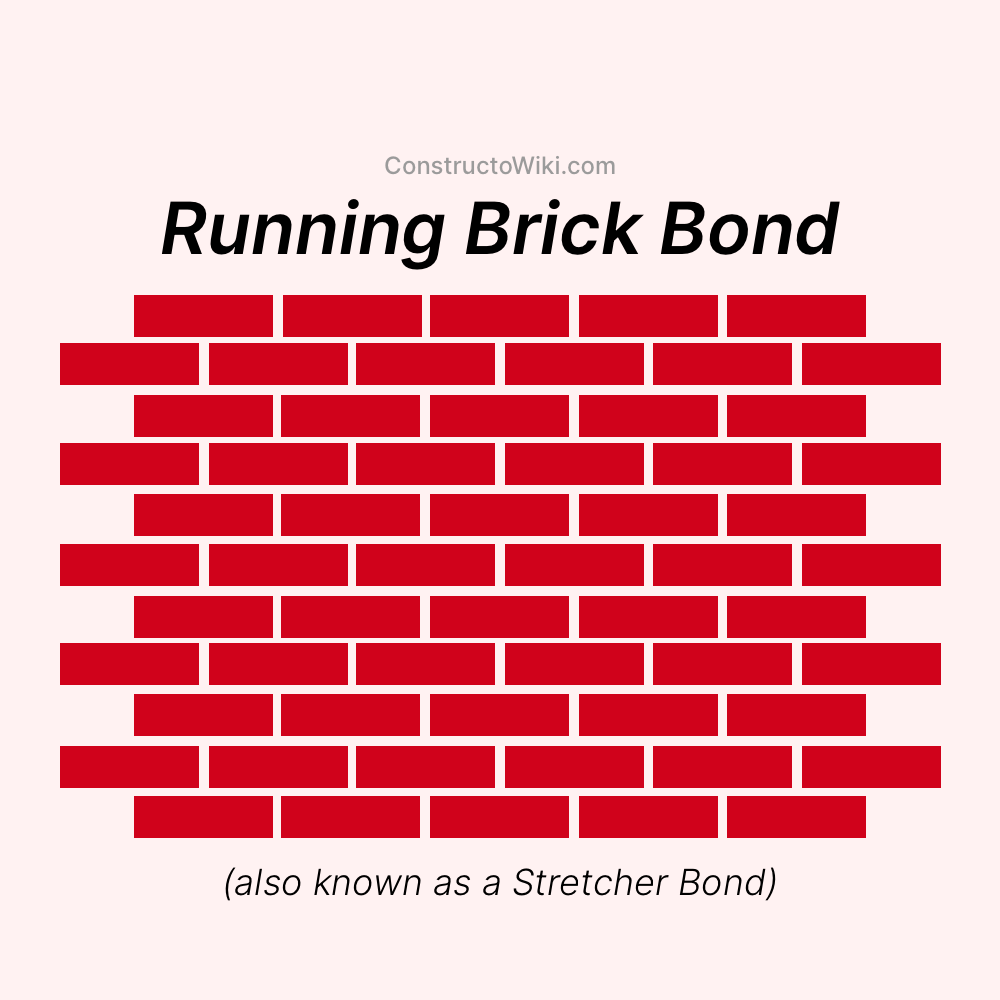
What is the Running Bond Method?
The running bond method is a bricklaying technique commonly used in construction for building walls. This method features bricks laid in a horizontal pattern where each brick is offset by half its length from the brick below it. This creates a staggered appearance, which not only adds visual appeal but also increases the strength and stability of the wall structure.
Key Features and Benefits
- Enhanced Structural Integrity: The staggered pattern distributes weight more evenly, providing greater stability.
- Aesthetic Appeal: The pattern is visually pleasing and commonly used in both residential and commercial buildings.
- Versatility: Can be applied to various types of masonry materials, including bricks and stones.
Why Use the Running Bond Method?
The running bond method offers numerous advantages:
- Cost-Effective: It requires fewer cuts and adjustments, reducing labor and material costs.
- Simple to Implement: Easier to lay out compared to intricate patterns, making it ideal for beginners and large projects.
- Strength: Provides a solid, stable structure that can withstand various pressures and environmental conditions.
Where is the Running Bond Method Used?
- Residential Homes: Commonly used for exterior and interior walls.
- Commercial Buildings: Frequently seen in office buildings, schools, and retail stores.
- Infrastructure Projects: Used in constructing bridges, tunnels, and retaining walls.
Source: Encyclopaedia Britannica
Going Deeper Into The Running Bond Method
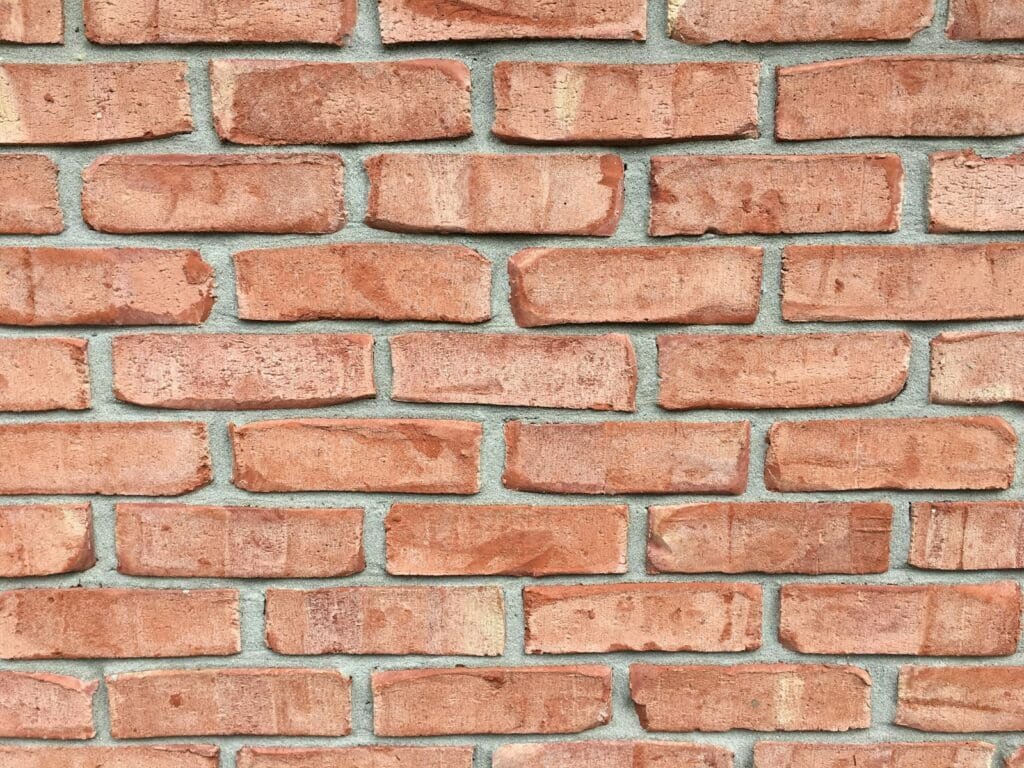
Anatomy of the Running Bond Pattern
Each row in a running bond pattern is known as a course.
A course comprises full bricks, with half bricks being used only at the end of alternate rows. The bricks’ long, broadside faces, known as stretchers, face outward, creating a continuous horizontal banding effect, which is at the core of this layout’s appeal. The positioning of bricks reduces the number of visible vertical seams, creating a neat and unified appearance.
Importance of Skillful Brick Laying
An essential factor in implementing the running bond method is skillful bricklaying.
By ensuring that each brick is accurately laid, the overall bond strength increases, safeguarding it against potential weaknesses. It also guarantees that the weight is evenly distributed across the structure, enhancing its resilience and longevity. Therefore, the more meticulous the bricklaying, the greater the benefits achieved from the running pattern.
Laying Process
The running bond method requires a systematic approach. Once the first course is laid, the next course begins with a half brick followed by full bricks, lining up the centre of the bricks over the joints of the lower course.
This pattern continues course by course, thereby forming the running bond pattern. The half bricks that begin and end alternate courses are known as queen closers, playing a vital role in preserving the continuity of the structural bond.
Limitations of the Running Bond Method
Though the running bond method offers several advantages, it does come with a set of limitations. For instance, the method lowers the wall’s capacity to withstand concentrated loads or lateral forces due to the vertical alignment of the head joints.
Additionally, it can create an illusion of height or length, which might not be desirable for all architectural designs.
Enhancing Versatility With Mortar
The choice of mortar color, texture, and style can make a significant difference in the wall’s final appearance when using the running bond method. It frames each brick and adds another design dimension, allowing for a broader range of aesthetic possibilities.
Depending on whether the mortar is recessed, flush, or protruding, the wall can take on an entirely different look, demonstrating the method’s versatility even further.
What is the Difference Between Staggered and Running Bond?
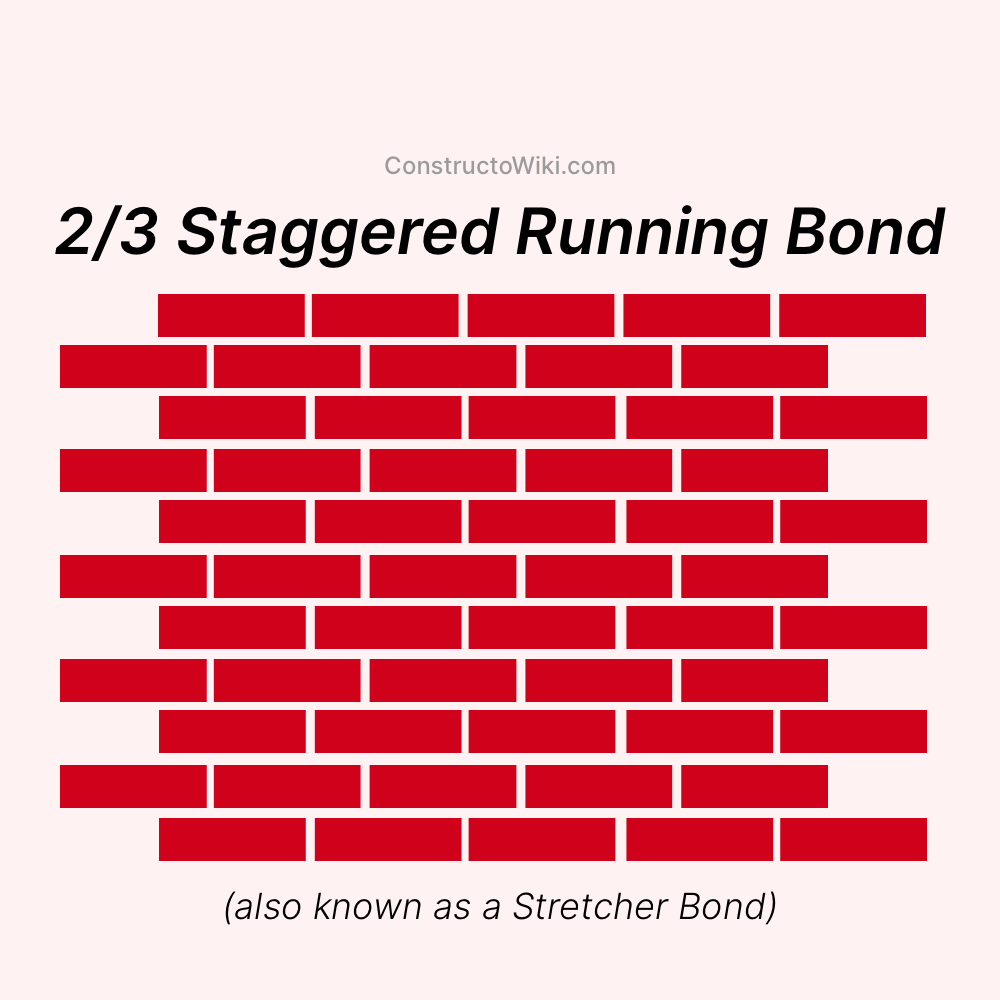
Staggered Bond: Key Characteristics
While the running bond method is widely recognized, the staggered bond introduces a different approach to bricklaying. Here’s what distinguishes it:
- Pattern Variations: Unlike the consistent half-brick offset in a running bond, a staggered bond can vary. It might use different offsets such as one-third or two-thirds of a brick length, giving the wall a unique look.
- Visual Complexity: The staggered bond can appear more complex and dynamic because the offsets alter the uniformity, creating a more intricate aesthetic.
- Structural Implications: The staggered bond also distributes weight differently. Depending on the offset, it may offer enhanced strength in certain structural contexts.
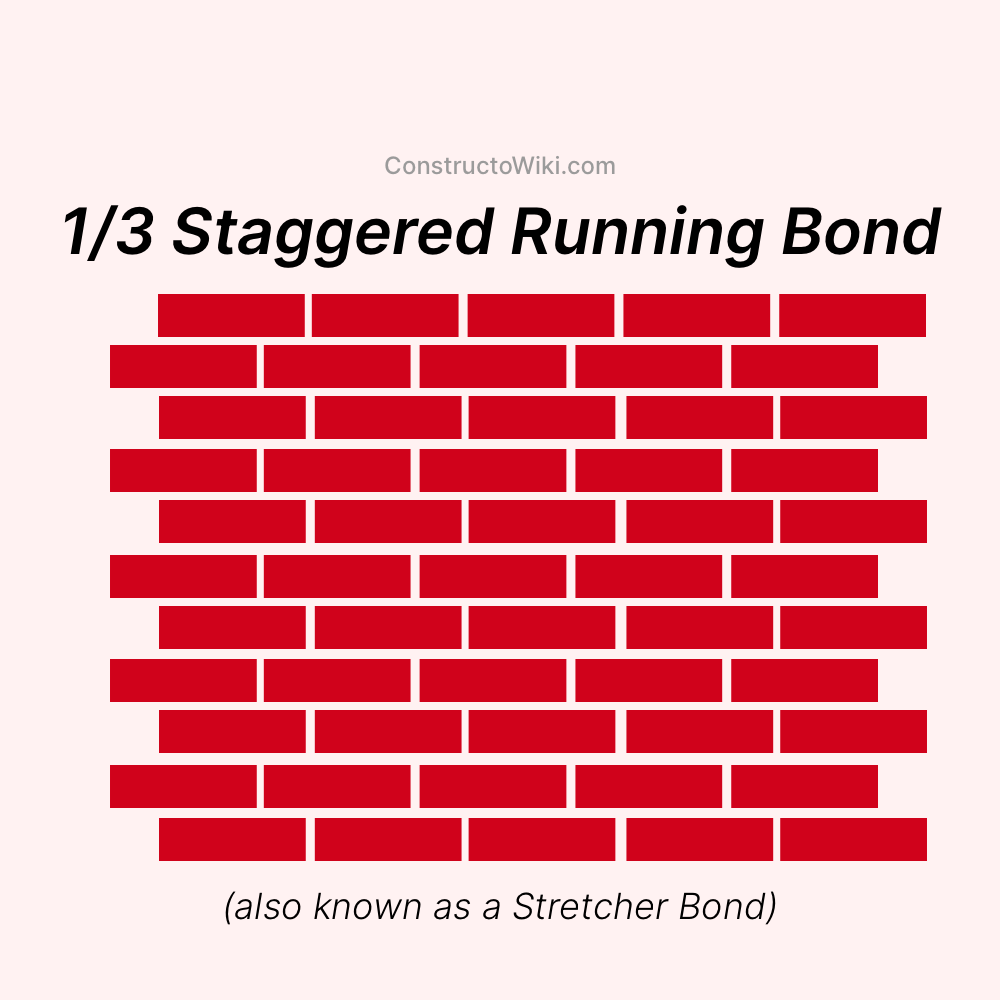
Types of Staggered Bond
Staggered bonds come in multiple forms, each serving a specific purpose and aesthetic intention:
- Third Bond: Each brick is offset by one-third of the brick below. This pattern mimics more intricate mosaic designs.
- Quarter Bond: The brick is offset by one-quarter of the brick length, creating an even more complex and less repetitive pattern.
- Random Bond: Bricks are staggered in no specific order, often chosen to mimic natural stone arrangements. This pattern introduces an organic and less uniform appearance.
Comparative Table: Staggered Bond vs. Running Bond
| Feature | Running Bond | Staggered Bond |
|---|---|---|
| Offset | Consistent half-brick | Variable (one-third, one-quarter, random) |
| Aesthetic | Uniform and orderly | Complex and dynamic |
| Weight Distribution | Even | Varied depending on the pattern |
| Structural Use | Common in straightforward construction | Used for enhanced aesthetic and unique structural requirements |
Practical Takeaways for Construction Choices
Choosing between a running bond and a staggered bond depends on various factors, including the aesthetic goal, structural needs, and the type of project. Here are a few practical takeaways:
- Project Type: Use running bond for straightforward, cost-effective walls. Opt for staggered bonds in projects requiring a complex appearance or varied weight distribution.
- Labor Skill Level: Running bond is easier for beginners due to its simplicity. Staggered bonds may need more skilled labor for precise execution.
- Aesthetic Goal: For a clean, uniform look, running bond is ideal. Choose staggered for a more eye-catching and unique design.
Source: Architectural Digest
What is the Difference Between Stacked Bond and Running Bond?
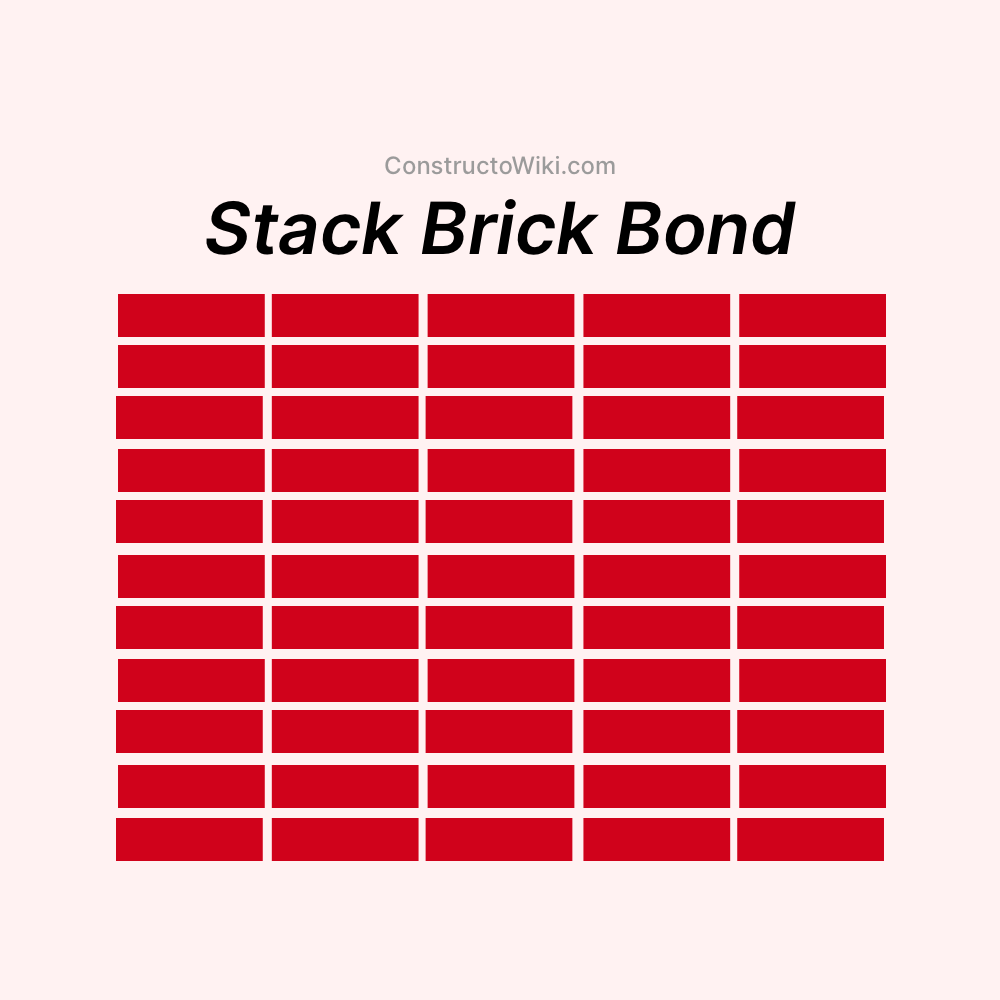
Stacked Bond: Key Characteristics
Unlike the running bond, a stacked bond offers a different visual and structural profile. Here are some primary characteristics:
- Pattern: Bricks are directly aligned both horizontally and vertically, creating a grid-like appearance. Each brick is placed directly above the brick in the row below.
- Visual Simplicity: Provides a clean and modern look with uniform vertical and horizontal lines. This pattern is often chosen for its minimalist aesthetic.
- Structural Factors: While visually striking, the stacked bond doesn’t distribute weight as effectively as other patterns. Vertical joints in successive courses align, which can create weaknesses.
Types of Stacked Bond
The stacked bond can be used in several variations, each with unique applications:
- Standard Stacked Bond: This is the most common form, where each brick is stacked flush above and beside its neighbors, forming a grid pattern.
- Vertical Stacked Bond: Emphasizes vertical joints, creating long vertical lines that can help elongate the perceived height of a wall.
- Horizontal Stacked Bond: Emphasizes horizontal joints, often used in designs aiming to accentuate the length or width of a structure.
Comparative Table: Stacked Bond vs. Running Bond
| Feature | Stacked Bond | Running Bond |
|---|---|---|
| Pattern | Aligned vertically and horizontally | Staggered by half-brick |
| Aesthetic | Minimalist and modern | Traditional and orderly |
| Weight Distribution | Less effective due to aligned joints | Even, reducing weak points |
| Structural Use | Best for non-load-bearing walls and decorative facades | Common in robust construction |
Practical Takeaways for Construction Choices
When deciding between a stacked bond and a running bond, consider the following:
- Structural Requirements: Use running bond for construction that demands strong weight distribution. Stacked bond is better suited for non-load-bearing applications and decorative elements.
- Aesthetic Preferences: Choose stacked bond for a clean, modern look. Running bond is ideal for a traditional, classic appearance.
- Cost and Labor: Both methods have comparable labor requirements, but running bond might save on material costs due to fewer necessary cuts and adjustments.
Source: Hunker
Summing Up the Running Bond in Bricklaying
In your exploration of the construction world, you’ve now added the running bond method to your list of known techniques.
Simple yet effective, this time-tested method is rooted in its uniform, half-brick offset pattern. Enhancing both the structural integrity and the aesthetic appeal of walls, the running bond holds undeniable benefits for both residential and commercial uses.
Plus, it offers a level of versatility, as it can be used with various masonry materials.
In comparing the running bond with other patterns, the staggered bond and stacked bond have their own unique appearances and uses. While offering different visual complexities and structures, your ultimate choice will depend on the project at hand and the specific goals tied to it.
Whichever bond you choose, remember that meticulous bricklaying is the key to reaping the benefits of these methods.
Frequently Asked Questions – FAQs
What is the Running Bond Method in construction?
The Running Bond Method is a bricklaying technique used in construction, primarily for building walls. The bricks are laid in a horizontal pattern, with each brick offset by half its length from the brick below it.
What are the main benefits of the Running Bond Method?
The Running Bond Method provides several benefits. It offers enhanced structural integrity, visual appeal, and versatility, making it suitable for various types of masonry materials. It is also cost-effective and easy to implement.
How does the Running Bond Method compare to the Staggered Bond and Stacked Bond methods?
The Running Bond method offers a uniform, orderly appearance and even weight distribution. The Staggered Bond can appear more complex and dynamic due to different offsets, and depending on the offset, may offer enhanced strength in certain structural contexts. The Stacked Bond creates a minimalist, modern look and is suited for non-load-bearing walls and decorative facades, but its aligned joints make weight distribution less effective.






